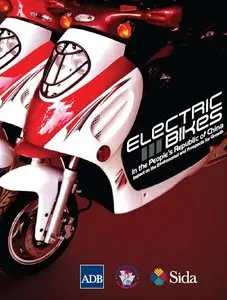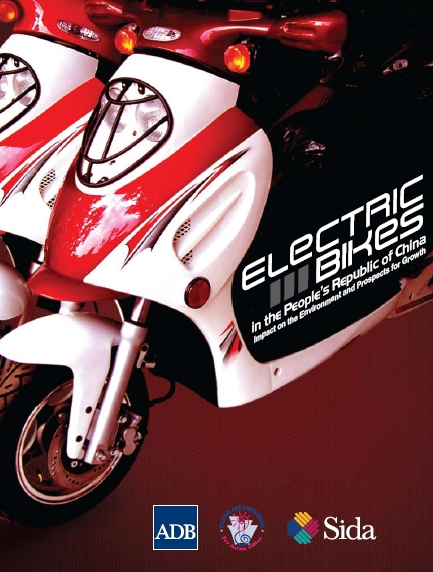Electric Bikes in the People’s Republic of China: Impact on the Environment and Prospects for Growth
ADB, SIDA | 2009 | ISBN: 9789715617932 | 94 pages | PDF | 2 MB
ADB, SIDA | 2009 | ISBN: 9789715617932 | 94 pages | PDF | 2 MB
This report analyzes the environmental performance of e-bikes relative to other competing modes, their market potential, and the viability of alternative battery technologies. It also frames the role of e-bikes in the PRC's transportation system and recommends policy for decision makers in the PRC's central and municipal governments.
Electric bikes (e-bikes) provide low-cost, convenient, and relatively energy-efficient transportation to an estimated 40 million-50 million people in the People's Republic of China (PRC), quickly becoming one of the dominant travel modes in the country. As e-bike use grows, concerns are rising about lead pollution from their batteries and emissions from their use of grid electricity, primarily generated by coal power plants.
Contents
Abbreviations
Acknowledgments
Executive Summary
Introduction
SECTION 1: Energy Use and Emissions of Electric Bike Life Cycle
Production Processes
End-of-Life
Lead Acid Batteries
Use Phase
Total Environmental Impacts of Electric Bike Life Cycle
SECTION 2: Environmental Impacts of Alternative Modes
Energy Use and Emissions of a Bicycle
Production Phase
Use Phase
Energy Use and Emissions of Motorcycles and Scooters
Production Phase
Lead Pollution from Motorcycle Batteries
Use Phase
Energy Use and Bus Emissions
Production Phase
Lead Pollution from Bus Batteries
Use Phase
Modal Comparison of Environmental Impacts
Distribution of Environmental Impacts
Direction of Public Health Impacts
Public Health Impacts of Air Pollution
Public Health Impacts of Lead Pollution
SECTION 3: Influence of Electric Bikes on Motorization Trends
Introduction to Motorized Two-Wheeler Market: Past and Present
Projections for Motorized Two-Wheeler Market Growth from Literature
Motorcycle and Electric Bike Ownership Growth Scenarios through to 2025
Methodology
Results
Factors Influencing Future Growth in Electric Two-Wheeler Market
Methodology
Driving Forces
Force 1: Technology Improvements
Force 2: Local Motorcycle Bans
Force 3: Local Policy Support for Electric Bikes
Force 4: Deteriorating Public Bus Transport
Other Driving Forces
Resisting Forces
Force 1: Strong Demand for Motorcycles
Force 2: Bans on Electric Bikes
Force 3: Support for Public Bus Transport
Interrelatedness of Forces
Quantifying the Forces
Prospects of Electric Bikes in Other Southeast Asian Countries
Conclusions
SECTION 4: Electric Two-Wheeler Battery Technology Status
Methodology
Battery Industry in the People’s Republic of China
Valve-Regulated Lead Acid Production
Lithium-Ion Production
Batteries for Electric Bikes
Valve-Regulated Lead Acid
Lithium Ion
Nickel-Metal Hydride
Electric Bike Battery Requirements
Electric Bike Battery Performance and Price
Valve-Regulated Lead Acid Battery Performance and Price
Cycle Life
Defect Rate
Lithium-Ion Performance and Price
Battery Transitions in the Electric Bike Market
Performance Test of Electric Bikes
Experimental Setup
Testing Procedures
Test Results
Test Conclusions
Japanese and European Markets
Electric Bike Market Growth and Opportunities for Battery Improvements
Cell Variability
Safety
Cost
Conclusions
SECTION 5: Conclusions and Policy Recommendations
References
with TOC BookMarkLinks



